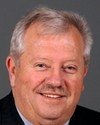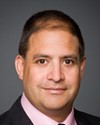Thank you.
Evidence of meeting #38 for Indigenous and Northern Affairs in the 40th Parliament, 2nd Session. (The original version is on Parliament’s site, as are the minutes.) The winning word was nwt.
Evidence of meeting #38 for Indigenous and Northern Affairs in the 40th Parliament, 2nd Session. (The original version is on Parliament’s site, as are the minutes.) The winning word was nwt.
3:55 p.m.
Conservative

The Chair Conservative Bruce Stanton
Hopefully we'll have an opportunity to follow up on some of those questions at tomorrow's site visit, which I know we're all looking forward to.
We will now go to Mr. Gaudet from the Bloc Québécois for five minutes.
3:55 p.m.
Bloc

Roger Gaudet Bloc Montcalm, QC
Thank you, Mr. Chair.
My question is for Mr. Noseworthy. I'm having trouble understanding you. Take, for example, my region in Quebec where I have served as mayor and reeve. There was a Community Futures Development Corporation, or CFDC, in our riding. It had a $1.5 million investment fund to manage in the community. It could turn to the Business Development Bank of Canada, or BDC, or to the EDC. There was also in the same regional municipality a local development centre that served as a portal or that also managed an investment fund. We also had Investissement Québec, a General Investment Corporation, the FTQ Fund, the CSN Fund and the risk fund.
I see, however, that you have nothing similar, or maybe it's that you have too many agencies. In my regional municipality, there were three mayors, business people, community officials and all kinds of people serving on the board of directors. How does it work with your organization, since you appear to be having some problems?
3:55 p.m.
Chairperson, Northwest Territories Community Futures Association
There are a couple of issues you raised there. First, the $1.5 million you mentioned was given to Community Futures organizations that needed it over the first five years of their lives. From my understanding, some Community Futures could access a second $1.5 million in the second five years, or the next three after the first five, if they warranted the money. In the Northwest Territories, of the two Community Futures that were present under federal funding, one received $1.55 million, I think, and the second received $1.4 million. The other five that are now in the NWT did not exist under federal government rules, so they were funded capital and O and M money after the feds left and the territorial government took over. Those organizations were not given $1.5 million. There was one that was close. Some have only received $250,000 for the investment fund, so we're underfunded partly because of that.
On the board issue you mentioned, every Community Futures organization fills the seats on its board differently. In some cases, you'll have organizations that have been given appointment ability. Maybe that's similar to what it was in the CF you were involved with in Quebec. It sounds as if you had a lot of community representation on the boards and that kind of thing. In my own Community Futures organization, what we do is we ask for nominations from a community. It does not have to be a chief or somebody who sits on a band council or somebody who sits on a village or hamlet council. It could be anybody who lives in the community, nominated by somebody else who lives in the community. Part of the reason we do it that way is that we do not want to be seen as a political organization. We want to be as far from politics and as neutral as possible. If we had all band and community governments represented on there, I don't think that would be possible.
Does that answer your two questions?
4 p.m.
Bloc

Roger Gaudet Bloc Montcalm, QC
That answers the question without really answering it. Earlier, you mentioned training. In our region, the Community Futures Development Corporation offers courses to self-employed workers to teach them how to calculate the PST, keep the books, and so forth. The training is provided by professionals. That's why I don't understand what the problem is with the organization that does this work in your region. These individuals should be able to teach these principles. You said earlier that no training was available for people going into business. That's what I do not understand. I'm not saying that this agency isn't good. However, right now, it may not be taking on the role it was designed to play.
4 p.m.
Chairperson, Northwest Territories Community Futures Association
Yes, I agree with you, they are not complete. That was the point I tried to make. If the brief gets translated and you get a chance to read it, you'll see more of that.
We do work one on one with clients. What I'm saying is that with more staff we could do more. Maybe we could provide some of this training in-house if businesses were interested in getting the training from us. Sometimes businesses perceive somebody from outside as better able to train them, but we do provide it when people ask or when people want to take the time to learn.
I mentioned in the brief.... I made a change and something got eliminated that should not have been, but in the brief, with the core funding in the NWT, provided by the GNWT for Community Futures, the seven Community Futures organizations are able to employ seven to eight people all together—so basically that's 1.2 people per organization with the core funding. Some organizations, but not all, have access to funding for an economic development officer in addition, and that would give them the second staff person. Some Community Futures organizations here operate with one staff person, and if you have insufficient staffing, you have to focus on the main activity, and the main activity is lending. Sometimes there just isn't time to do the other services and to offer those other services. That's why I suggested the federal-territorial partnership, to try to bring us back up to what you see in Quebec and Ontario and the rest of Canada.
4 p.m.
Conservative

The Chair Conservative Bruce Stanton
Thank you, Mr. Gaudet.
I have just a point of clarification, Mr. Noseworthy. You said that five of the seven are funded almost entirely by—
4 p.m.
Chairperson, Northwest Territories Community Futures Association
No, there's some misunderstanding there. Two were originally created under the federal government: the one in Hay River where Mr. Bevington is from, I believe, and one in Inuvik. After the program was downloaded to the territorial government, who voluntarily took it—it wasn't forced upon them or anything—five more were created.
4 p.m.
Chairperson, Northwest Territories Community Futures Association
Now they're all territorially funded, except one, which refuses to sign the contribution agreement because there's so little in it for them.
4 p.m.
Conservative

The Chair Conservative Bruce Stanton
Okay, so the CFDC program, which we think of as a federal program, in NWT is actually a territorial program.
4 p.m.
Chairperson, Northwest Territories Community Futures Association
And in Nunavut.
4 p.m.
Chairperson, Northwest Territories Community Futures Association
I should point out, although Mr. Bagnell has left already, there was a community futures organization in the Yukon prior to 1995 when the rationalization happened. Their fund got passed on to another organization.
4 p.m.
Conservative

The Chair Conservative Bruce Stanton
Very good. Thank you, Mr. Noseworthy.
We'll go to Mr. Dreeshen for five minutes, and I understand that Mr. Clarke is going to grab 30 seconds as well. So go ahead and split your time.
4 p.m.
Conservative

Earl Dreeshen Conservative Red Deer, AB
I might just take a few seconds and then he can have the rest of my time.
4 p.m.
Conservative

Earl Dreeshen Conservative Red Deer, AB
Mr. Kennedy, in your presentation you spoke of new service delivery methods that you felt might be possible. Could you could explain how you might be able to include different health service deliveries with the business model that you were considering?
4 p.m.
President and Chief Executive Officer, North West Company
The one I'll come back to is the idea of a pharmacy technician. We actually have set up now in Tuktoyaktuk, and we're going to move into, I think, Paulatuk and Aklavik as well. Out of our Inuvik pharmacy, we're doing remote prescription fulfillment. You can do that with an automated dispensing device, but the key here is that you could upgrade—this is import substitution—the skill and the salary of someone locally, not all the way to a pharmacist. They're very hard to find and recruit even for places such as Inuvik, but a pharmacy technician, which is a well-paid position, can fulfill that prescription locally. They'll scan the prescription written by the doctor, which will get sent electronically to the hub fulfillment centre in Inuvik, for example, and then the prescription would be downloaded electronically but physically in the location.
I use this as an example because British Columbia, under its College of Pharmacists regulations, has enabled that for remote areas. North Dakota, Montana, and many sparsely populated areas of the U.S. have it. It's not that consistent in Canada. It doesn't exist anywhere else, in fact, except B.C., and by special approval we have it for the James Bay area of Ontario. It's not in Nunavut yet.
If we can envision that, with nurse practitioners, with different kinds of professional occupations and skills, where we you bridge the gap? Instead of having to go all the way to one end and say we're going to get a doctor for $400,000 to please come up five days a week, can we have someone, whether it's through telemedicine with a good broadband video, help them in a collaborative way? We see a lot of that coming, but it's slow and the opportunity cost is huge. That's my point.
4:05 p.m.
Conservative

Earl Dreeshen Conservative Red Deer, AB
Have you looked into any pilot projects or working with the health department, and so on?
4:05 p.m.
President and Chief Executive Officer, North West Company
This particular example I'm giving you is a collaboration with the regional hospital and the local public health nurses. On the medical front, we are talking to FNIP, the first nation information project, about the idea of medical telemedicine models married up with local clinics. I'd say it's embryonic now, at this stage, but the genesis, the idea, is the same.
4:05 p.m.
Conservative

Rob Clarke Conservative Desnethé—Missinippi—Churchill River, SK
I have about 30 seconds.
Mr. Robinson, you mentioned the pellet program. When you say it's carbon neutral, would you also be getting back carbon credits, or not? Would that qualify?
First of all, have you looked at that?
4:05 p.m.
Executive Director, Arctic Energy Alliance
I'm not sure I understand the question. Are you talking specifically about wood pellets being carbon neutral?